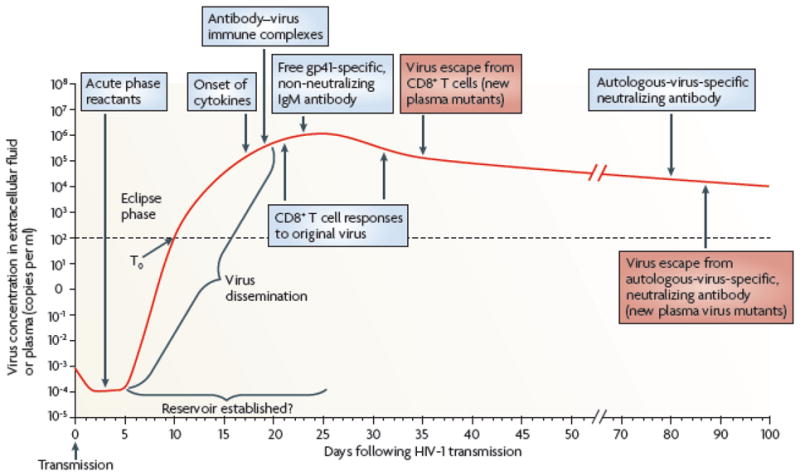
| PMC full text: | Trends Mol Med. Author manuscript; available in PMC 2012 Feb 1. Published in final edited form as: Trends Mol Med. 2011 Feb; 17(2): 108–116. Published online 2010 Nov 26. doi: 10.1016/j.molmed.2010.10.008 |
Figure 1

The first systemically detectable immune responses to HIV-1 infection are the increases in levels of acute-phase proteins in the plasma, which are observed when virus replication is still largely restricted to the mucosal tissues and draining lymph nodes (eclipse phase). When virus is first detected in the plasma (T0), broad and dynamic increases in plasma cytokine levels are also observed. Within days, as plasma viremia is still increasing exponentially, the first antibody–virus immune complexes are detected. Expansion of the earliest HIV-1-specific CD8+ T cell responses also commences prior to peak viremia, followed by detection of the first free gp41-specific but non-neutralizing IgM antibodies. Complete virus escape from the first CD8+ T cell responses can occur rapidly, within 10 days of T cell expansion. By this time, viral reservoirs exist, possibly becoming established within days of infection. The earliest autologous-virus-nAbs are detected around day 80 following infection, as viral loads are still declining prior to the onset of the viral set point. Antibody escape virus mutants emerge in the plasma within the following week. Figure is reproduced with permission from McMichael AJ, Haynes BF et al. Nature Medicine, 10:11–23, 2010. © Nature Publishing Group.


